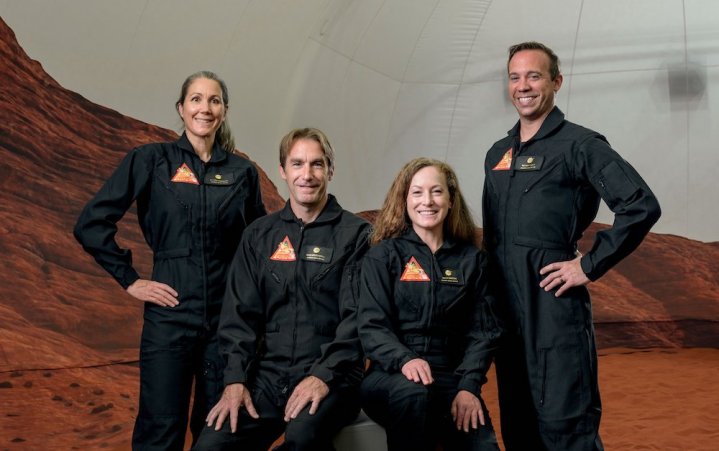Four volunteers are about to enter a simulated Mars habitat where they’ll spend the next 378 days as part of ongoing preparations for the first crewed mission to the faraway planet.
The specially designed, enclosed habitat at NASA’s Johnson Space Center in Houston, Texas, will host Alyssa Shannon, Ross Brockwell, Kelly Haston, and Nathan Jones from Sunday, June 25. The team’s experience spans science, engineering, and health, and each member will use their specific skills during their stay.

The mission will be the first of three one-year Mars surface simulations, called CHAPEA (Crew Health and Performance Exploration Analog).
The inhabitants will experience many of the challenges of a human mission to Mars, including confinement, resource limitations, equipment failures, and other environmental stressors, NASA said.
To make the experience as realistic as possible, the mission will also deploy communication delays that real crews will experience due to the vast distance between Earth and Mars.
The health and performance of the volunteers will be constantly monitored during their time in the habitat to give mission planners a clearer idea of how a crew might handle various aspects of a long-duration mission to the red planet.
Activities will include tending to crops, conducting science research, maintaining the habitat, and performing “Marswalks,” so the four inhabitants will certainly be kept busy.
The CHAPEA habitat where the four mission members will live for just over a year comprises a 1700-square-foot space with around nine rooms, including private bedrooms, a shared bathroom and toilet, and a common area where everyone can gather together for meals and other social activities. There’s also a small area beside the habitat that simulates the martian surface for the Marswalks.
The facility was built using large 3D printers, which are also part of the research as similar construction methods may be able to be used on Mars.
NASA is aiming to launch the first human crew to Mars in the late 2030s, though that date could slip. To date, the only other celestial body that humans have traveled to is the moon, with Mars’ greater distance and harsher environment presenting a far greater challenge for mission planners.
Editors’ Recommendations
Credit: Source link


Comments are closed.